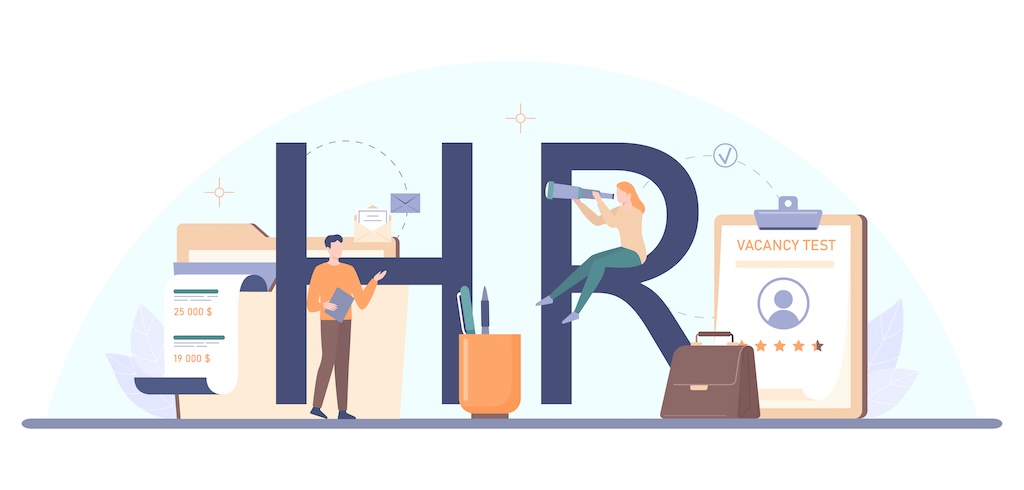
Documentation
|
August 14, 2025
|
11 MIN
Why HR Standard Operating Procedures Are Crucial for Recruitment and Onboarding Success
Imagine trying to welcome new hires when there is no clear process, no structure, and no communication between departments. The result is missed deadlines, equipment that never arrives, and a new employee who starts their job already unsure whether they’ve joined a team that knows what it is doing.
This is where HR Standard Operating Procedures make a real and noticeable difference.
In today’s workplace, recruitment and onboarding are often the first interactions a person has with your culture. When these processes are inconsistent or poorly defined, the damage is hard to undo. On the other hand, well-crafted SOPs ensure hiring and onboarding are done with care, structure, and purpose—regardless of who is doing the work.
This post unpacks why HR SOPs are essential, especially as you grow, hire across roles and regions, and want to build a workplace that runs with clarity and consistency.
What Are HR Standard Operating Procedures?
HR Standard Operating Procedures are documented instructions that describe how particular HR tasks are carried out in your organization. They are not the same as high-level policies. SOPs are step-by-step guides that specify how hiring, onboarding, payroll, or compliance processes work in real terms.
They usually include a few key pieces of information. First, they explain the purpose of the procedure. Then, they describe the steps to follow, designate which roles or departments are responsible for what, and include any relevant templates, forms, or checklists. They also highlight legal compliance requirements and link to HR systems or tools needed to complete each step.
Used correctly, these documents become reference points for HR teams and hiring managers. They promote consistency, reduce risks, and help teams scale their efforts without reinventing the wheel each time.
The Strategic Role of HR SOPs in Recruitment
Hiring is not just about filling a seat. It is a process with multiple moving parts—from writing job descriptions to finalizing offers—each of which needs consistency and clarity. SOPs support hiring teams by giving them an agreed way to do the work well, on time, and legally.
Ensuring Process Consistency
Without a guide, hiring managers often default to doing things on their own terms. The result is inconsistent workflows, interviewer confusion, and different experiences for each candidate. A recruitment SOP stops this from happening by creating a baseline.
It ensures that recruiters and managers handle job postings, interviews, scoring, and job offers using the same structure and criteria. This reduces subjective decision-making, keeps the hiring process fair, and improves overall candidate quality.
It also lowers the risk of non-compliance with employment law, which includes everything from equality requirements to background check protocols. Whether you are hiring in one office or across three continents, SOPs make the process reliable.
Improving Recruitment Speed and Clarity
When teams know exactly what needs to happen and in what order, they stop wasting time repeating basic steps or chasing approvals. A strong SOP lays out who does what and when. Recruiters know when to hand off. Hiring managers know their role and timing. HR knows when to track milestones.
This clears up confusion, shortens time to hire, and improves collaboration. Candidates benefit too—they receive timely updates, accurate expectations, and clear next steps.
Aligning with Compliance and Equity Goals
Good SOPs do more than track tasks. They also include specific requirements related to employment law and internal policies. This can range from ensuring job postings reflect inclusive language to making sure interview panels represent different departments.
Checkpoints may include tracking representation in shortlists, documenting interview outcomes properly, and confirming candidates' right to work. These structural reminders help recruitment move faster without cutting legal or ethical corners.
Clear hiring SOPs also help scale diversity and inclusion goals from words into actual practices.
Why Onboarding SOPs Improve Retention and Productivity
Getting someone to accept an offer is one thing. Helping them feel like they belong and can succeed is another. Onboarding SOPs bridge that gap between “welcome” and “I know what I’m doing here.”
Setting New Hires Up for Success
When onboarding follows a clear path, new employees get access to the tools, people, and training they need—on time. Without SOPs, people often show up on day one without a laptop, access to key systems, or instructions on who they report to.
A strong HR SOP covers all of that. It outlines how to deliver welcome materials, provides steps for remote equipment delivery if needed, and ensures buddy systems or manager check-ins actually happen. It also tracks completion of compliance tasks like digital paperwork.
According to industry data, companies that take onboarding seriously enjoy much better retention. New hires stay because they feel supported early and know what success looks like in the first 90 days.
Improving Collaboration Across Departments
HR does not onboard people alone. It requires IT to set up directories and accounts. Finance might need to approve allowances or payroll access. Hiring managers define early goals. These steps often get stuck unless someone owns each part and knows when to act.
An onboarding SOP maps this out. It assigns responsibilities clearly, eliminates redundancy, and prompts coordination between departments automatically. Everyone knows their part, and new hires stop falling through the cracks.
Making Growth and Change Manageable
As companies grow, onboarding becomes more complex. Remote hires need tailored checklists. Leaders require different training timelines than junior contributors. Certain departments may use different systems altogether.
If you rely only on informal knowledge, things start breaking. But if onboarding SOPs are built with flexibility, they help teams scale without giving up on quality.
You can adjust timelines, make versions for different roles, or build modular steps for hybrid work setups. The goal is not to be rigid. It is to have a foundation that can evolve with the business.
HR SOPs Benefit Every Organization Size
Smaller businesses may assume that SOPs are something for giants with legal teams and sprawling HR departments. That assumption tends to cost them in the long run.
SOPs are especially helpful for companies with small HR teams or no in-house HR at all. Being clear about how to handle things like interviews, onboarding calls, or setting up access helps reduce delays, improve candidate follow-up, and make performance predictable.
Startups introducing SOPs early avoid the chaos that often comes with fast hiring rounds or team turnover. These procedures help bring new team members up to speed and reduce costly errors like missed paperwork or illegal contracts.
Keeping SOPs Relevant in the Future
The way we hire and work is changing fast. A process that worked three years ago might be outdated today. Keeping SOPs updated means paying attention to the broader trends shaping work now and in the near future.
Integrating AI and Automation Tools
From resume parsing to chat-style screenings, AI is playing an increasing role in recruitment. SOPs should include instructions for when and how these tools are used, what decisions are automated versus human, and how to handle errors when they arise.
Adapting to Skills-Based Hiring Models
Some companies are moving away from traditional degree-based eligibility and instead focus on practical skills. That shift affects sourcing, screening, and evaluations. A future-fit SOP reflects this by including steps like sample tests or portfolio reviews alongside interviews.
Supporting Remote and Hybrid Teams
Even if the company is mostly office-based, chances are at least some hires will be remote. SOPs should guide tasks such as scheduling virtual introductions, delivering laptops internationally, and helping new team members connect to company culture digitally.
Creating Role-Specific Onboarding Journeys
Leadership hires need different onboarding than junior employees. Technical roles benefit from different timelines and training than customer-facing ones. SOPs can include separate tracks for each path while still sharing a baseline structure across all hires.
How to Measure If SOPs Are Actually Working
It is not enough to write an SOP once and forget about it. You need to check whether it is helping or causing friction. Some useful things to track:
Time to hire. This includes from job request to accepted offer.
Onboarding completion. Did the new hire complete all tasks in the first two weeks?
New hire feedback. Ask how useful or confusing the onboarding experience was.
Compliance checks. Count how many offers or contracts required fixing later on.
Escalation tickets. If IT or HR departments get constant requests to fix onboarding errors, that’s a clue.
Conclusion
HR SOPs are not just housekeeping documents. They form the foundation for hiring and onboarding at scale and with confidence. When done well, they improve candidate experience, reduce errors, safeguard against legal risk, and align teams around repeatable steps.
They are especially helpful as work becomes more distributed, technologies evolve, and teams grow quickly across departments or geographies.
Whether you are onboarding your tenth hire or your fiftieth, SOPs make each experience smoother, less rushed, and more aligned with your values and goals.
Frequently Asked Questions (FAQs)
HR SOPs are step-by-step instructions for handling HR responsibilities like hiring, onboarding, payroll, or compliance. They help ensure these tasks are done consistently across the organization and meet legal and internal standards.
SOPs prevent every recruiter or manager from doing things their own way. They reduce hiring bias, keep job offers aligned with policy, and speed up decision-making by clearly defining each step and the people responsible.
They make sure new hires get the right support at the right time. That includes receiving equipment, meeting their team, starting training, and understanding their first 90 days. All this helps them contribute faster and feel more engaged.
Small businesses benefit just as much—sometimes more. SOPs reduce training time, prevent costly mistakes, and let small HR teams work more efficiently by relying on clear steps rather than improvisation.
Review SOPs at least once a year or after each major process change. New software tools, law changes, or structural shifts often require changes to how tasks are handled.
Yes. If you are using software that sends offer letters or schedules calls automatically, the SOP should note where and how that automation happens, and what needs human review.
HR policies state what your company believes or requires—for example, equal pay or anti-harassment. SOPs explain the steps you take to make that policy happen, like how interviews are scored or how complaints are documented.
👍
What others are liking
5 Steps to outline your ideal documentation structure
5 MINS READ
Where to start the your journey of mapping out your ideal documentation structure, aligning it with the very heartbeat of your organization?
Defining a winning level of detail in your process
3 MINS READ
What is too much detail, and what is too little? This article described in that winning level detail about what detail is enough.





